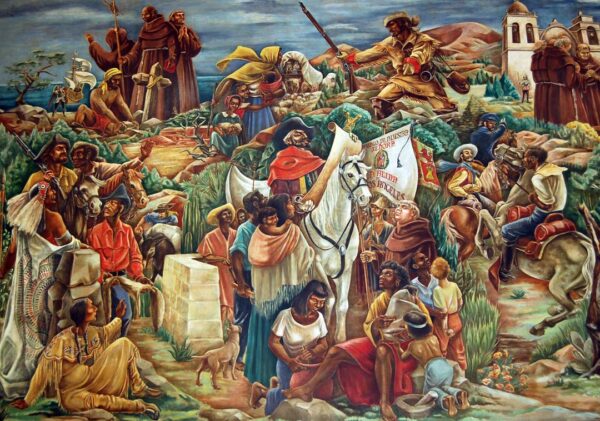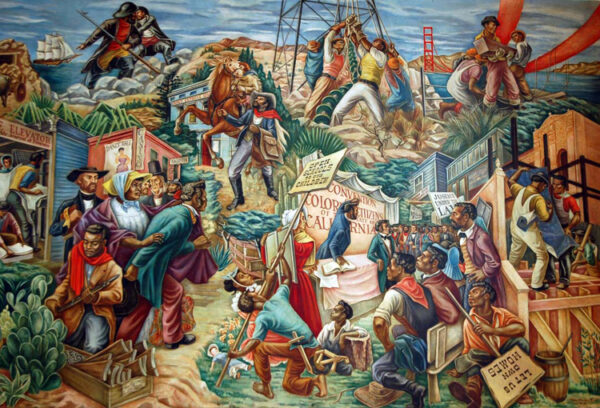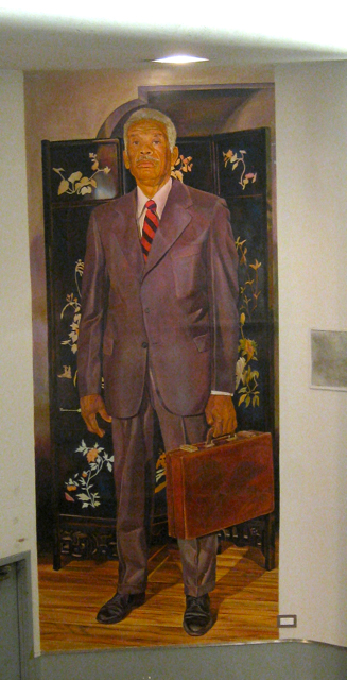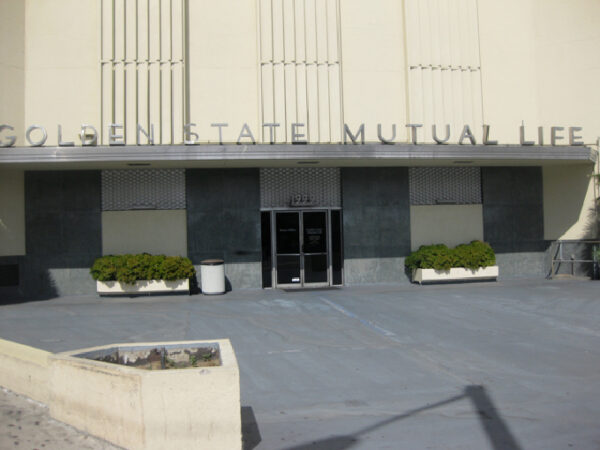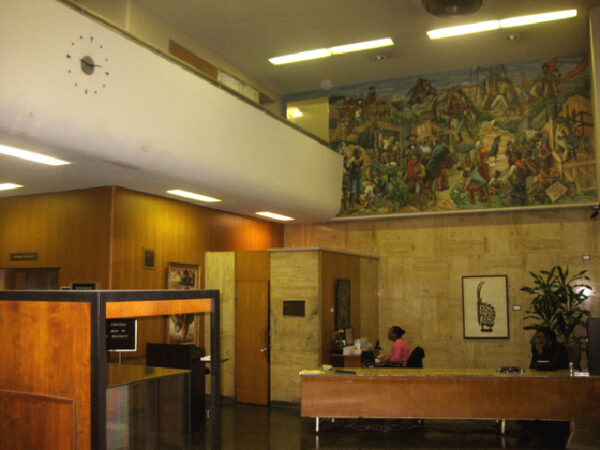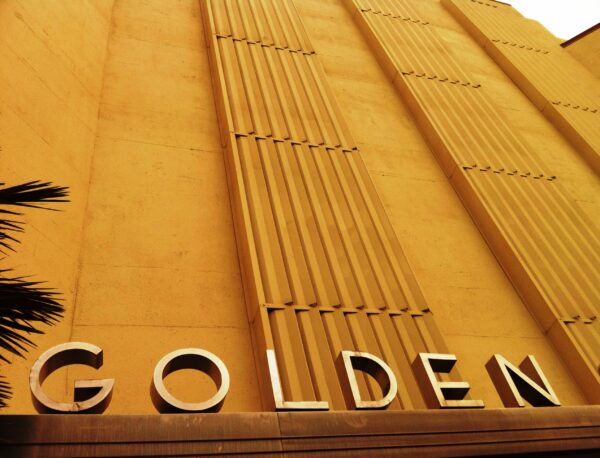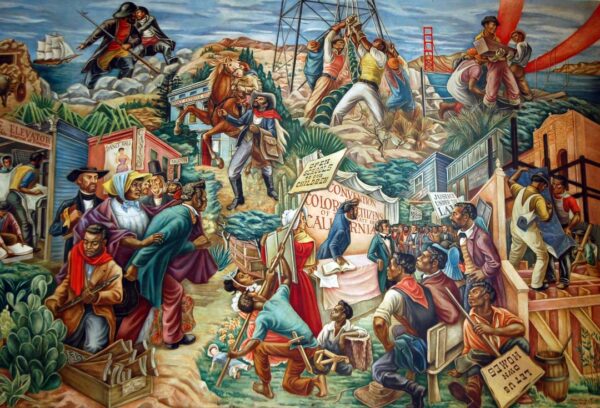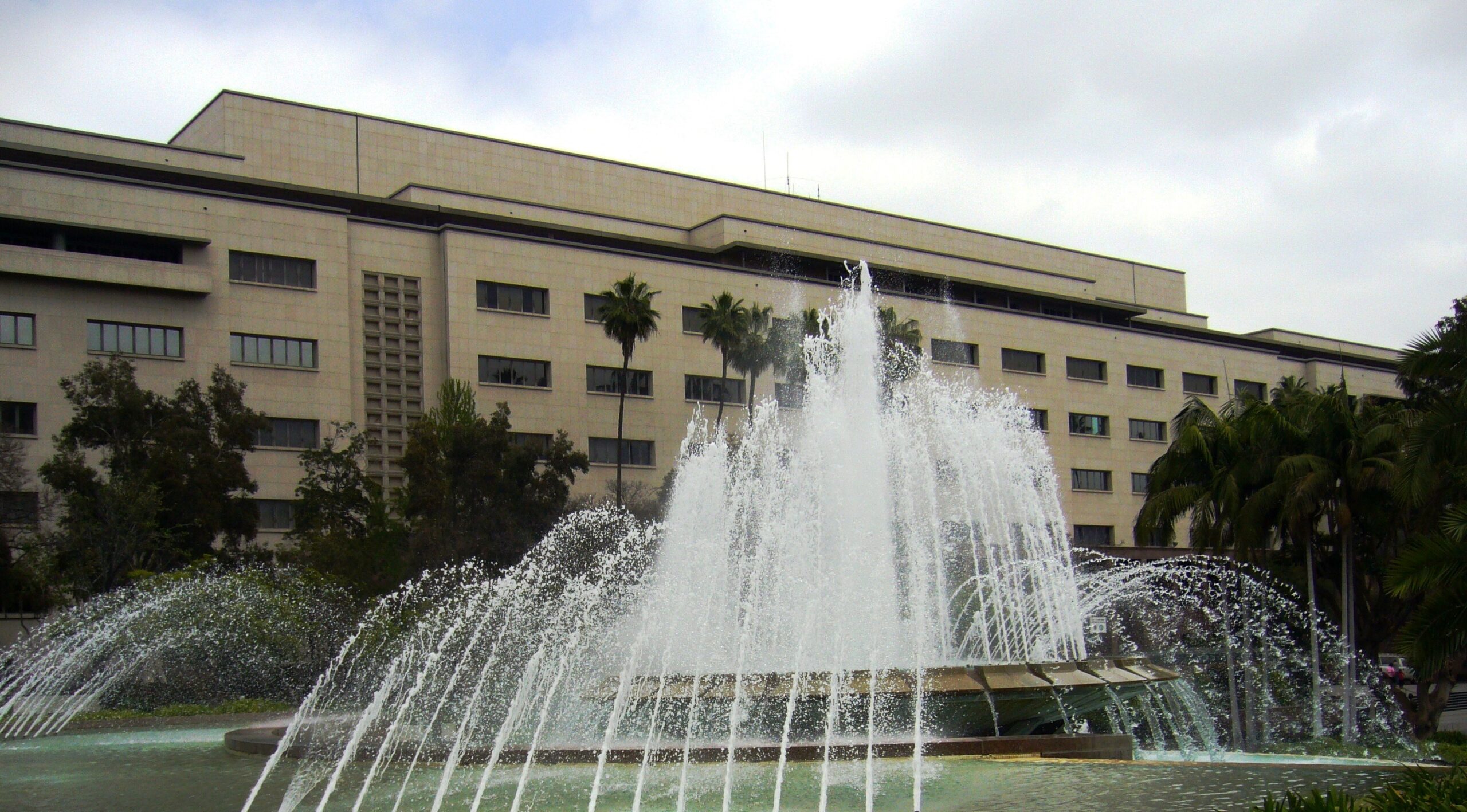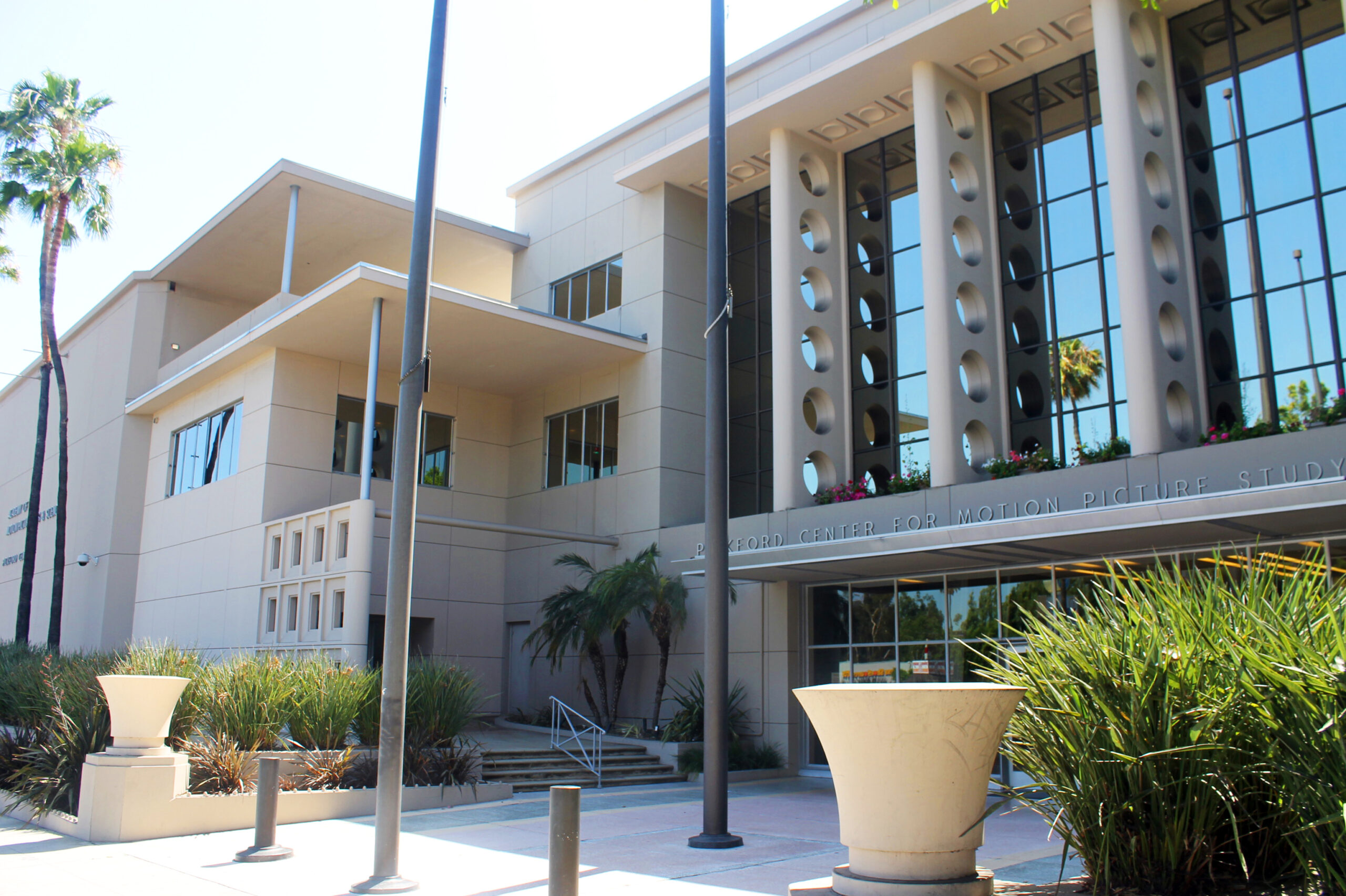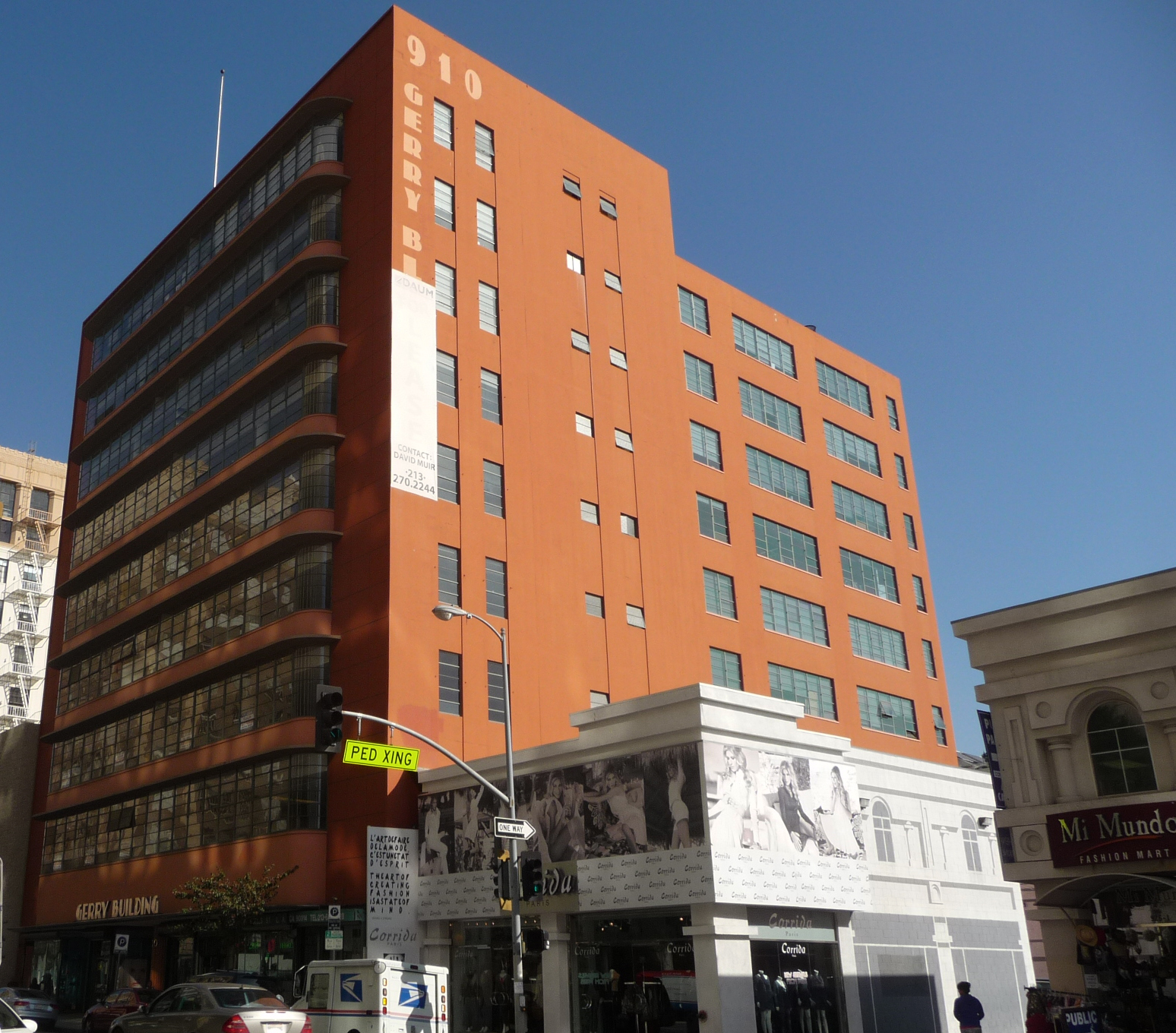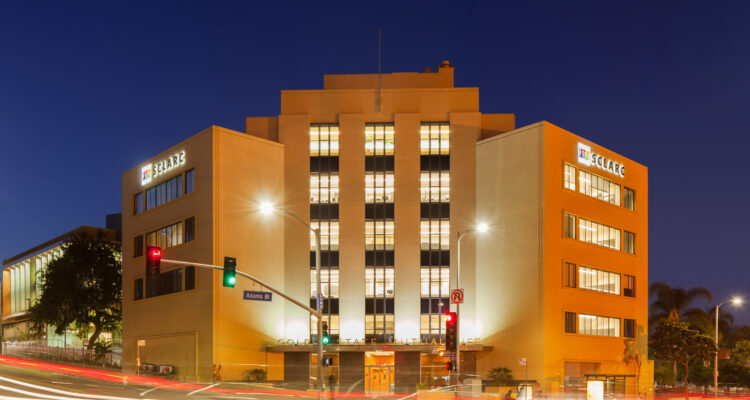
Place
Golden State Mutual Life Insurance Building
In 1949, Golden State Mutual moved into a new, custom-built home office designed in the Late Moderne style by renowned architect Paul Revere Williams.
Saved
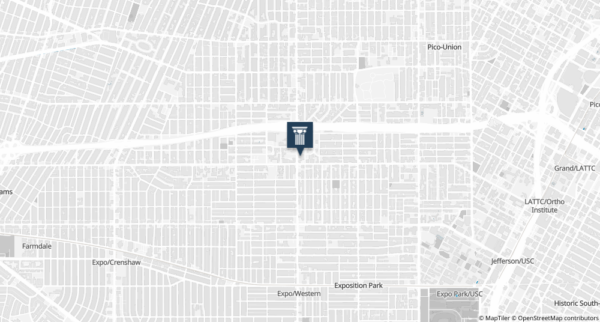
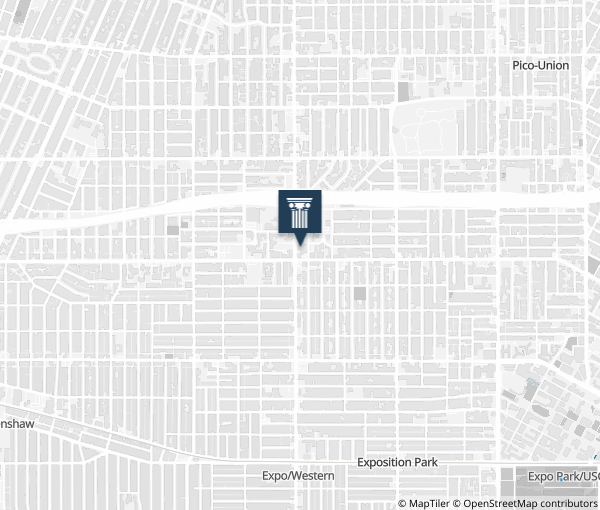
Place Details
Address
Architect
Year
Style
Decade
Property Type
Government Officials
Community
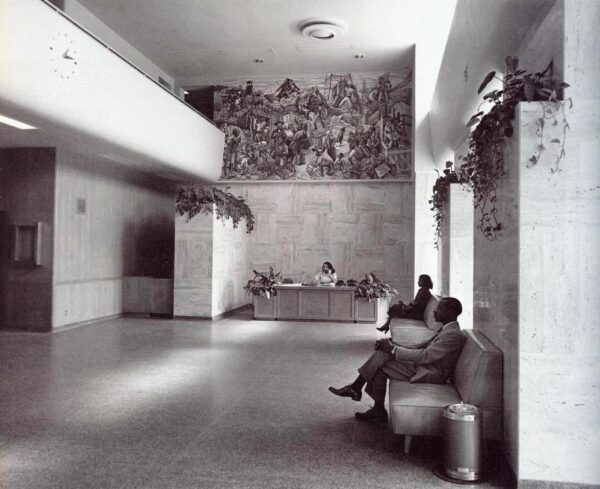
| Interior lobby of Golden State Mutual Life Insurance with interior murals.
Overview
In 1949, Golden State Mutual Life Insurance Company found a new home in West Adams. The insurance company was the country’s largest Black-owned enterprise, and filled a crucial need for Black Angelenos by providing both life insurance as well as employment opportunities.
The building was custom-designed by renown Black architect Paul R. Williams in the Late Modern building style. It features two site-specific murals depicting African Americans’ experience in California from 1957 through 1949.
The Conservancy successfully nominated the building as a Los Angeles Historic-Cultural Monument in 2011. We worked with the building’s new owners, Community Development Impact, West Adams Heritage Association and other community advocates, to ensure that this architecturally and culturally significant building and its murals remain intact as a cultural asset to the community.
About This Place
About This Place
After the building was designated a local Historic-Cultural Monument and listed on the National Register, much-needed restoration began. The team researched archives and interviewed original occupants to gather information about the building’s original state. They then began the painstaking task of removing layers of incompatible alterations from past years, as well as repairing years of extensive water damage.
The team restored the building’s exterior to its original 1949 appearance by removing decades’ worth of incompatible alterations, rehabilitating original doors and windows, and reopening key window spaces that had been covered for years. They also restored interior spaces to their original look, including the main lobby with the original murals.
